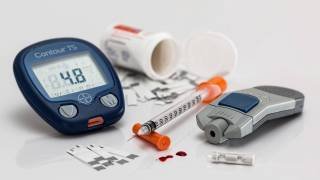Common Cold Virus Helps Protect People from COVID-19

The journal Nature Communications volume report a longitudinal study on August 6, 2021, assessing the antibody response to a wide panel of antigens from the SARS-CoV-2 virus and Human Cold Coronaviruses (HCoV) up to 7.7 months after infection.
The SEROCOV study conducted in Barcelona, Spain, shows evidence of COVID-19 protection by pre-existing HCoV antibodies, such as those related to the common cold.
This is an important finding to understand better why some people may be less affected by COVID-19.
Importantly, these researchers observed a trend towards higher levels of antibodies against HCoVs N proteins at baseline in those participants who did not become infected with the SARS-CoV-2 virus, suggesting some level of cross-protection against infection.
Moreover, asymptomatic SARS-CoV-2 seropositive participants tended to have higher anti-HCoV N IgA and IgG levels before seroconversion than symptomatic participants, suggesting cross-protection against disease.
In addition, asymptomatic seropositive participants had higher anti-HCoV N IgG levels after infection than symptomatics, pointing towards a disease-protective back-boost of anti-HCoV antibodies.
Combined with the observation that higher baseline anti-HCoV N antibody levels correlated with less de novo anti-SARS-CoV-2 N antibody production, the researchers propose a protective effect of previous exposure to HCoVs, which could be the result of a diminished exposure (decreased viral load) due to the suggested protective role of anti-HCoV antibodies.
“Although cross-protection by pre-existing immunity to common cold coronaviruses remains to be confirmed, this could help explain the big differences in susceptibility to the disease within the population,” stated ISGlobal researcher Carlota Dobaño, in a related press statement.
Previous studies have reported a lack of anti-disease cross-protection. Some studies have associated severe COVID-19 with a back-boosting of antibodies against S2 from betacoronaviruses, and N, and S from OC4331.
Moreover, these studies included only hospitalized patients instead of this cohort, mainly asymptomatic and participants with mild/moderate symptoms.
Knowing the duration of HCoV protective immunity to reinfection and disease will be key to understanding HCoV’s role in COVID-19 epidemiology and pathology at a population level.
In conclusion, these researchers stated that antibody levels and neutralizing capacity are generally maintained for up to 7.7 months. However, in a substantial number of individuals, antibody levels increase after some months post symptoms onset.'
Importantly, previous exposure to HCoVs could have a protective effect against SARS-CoV-2 infection and symptoms development and may partly explain the differential susceptibility to disease in the population.
Note: Additional work focusing on prospective cohorts would allow the assessment of mechanisms and confirm causality in anti-HCoV antibodies on SARS-CoV-2 acquisition, disease progression, immune response maintenance, and correlates of protection. A strength of the present study is the availability of sequential sampling within a random cohort, including asymptomatic and symptomatic subjects.
But, further studies are needed to elucidate the mechanisms and nature of these increases and their implications for virus shedding and disease progression.
The study had funding from the European innovation network EIT Health. No conflicts of interest were disclosed.

.jpg)










.jpg)
.jpg)





.jpg)



